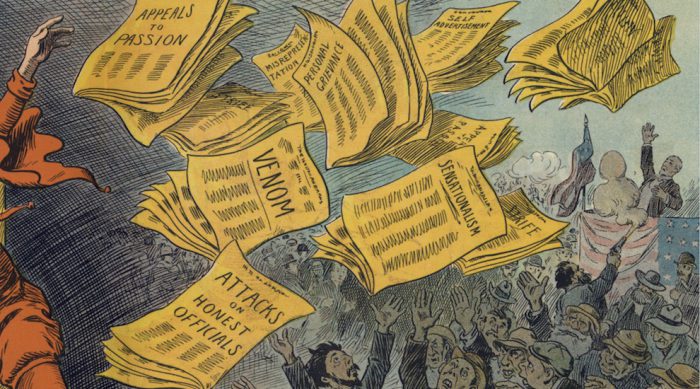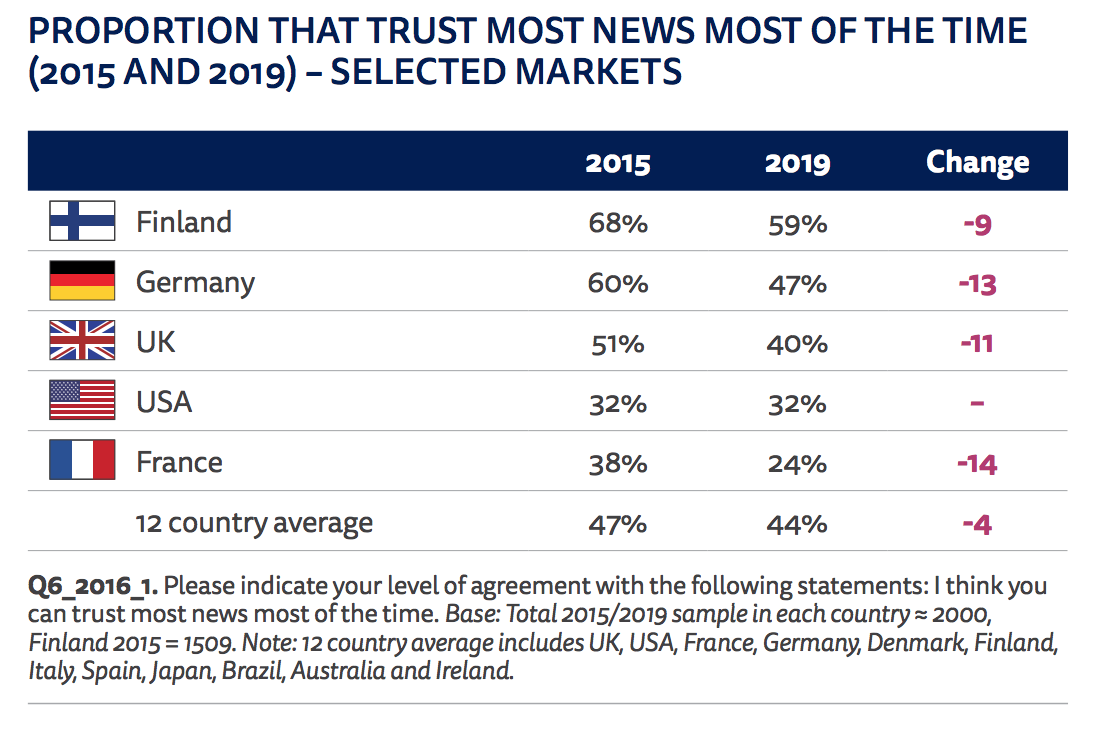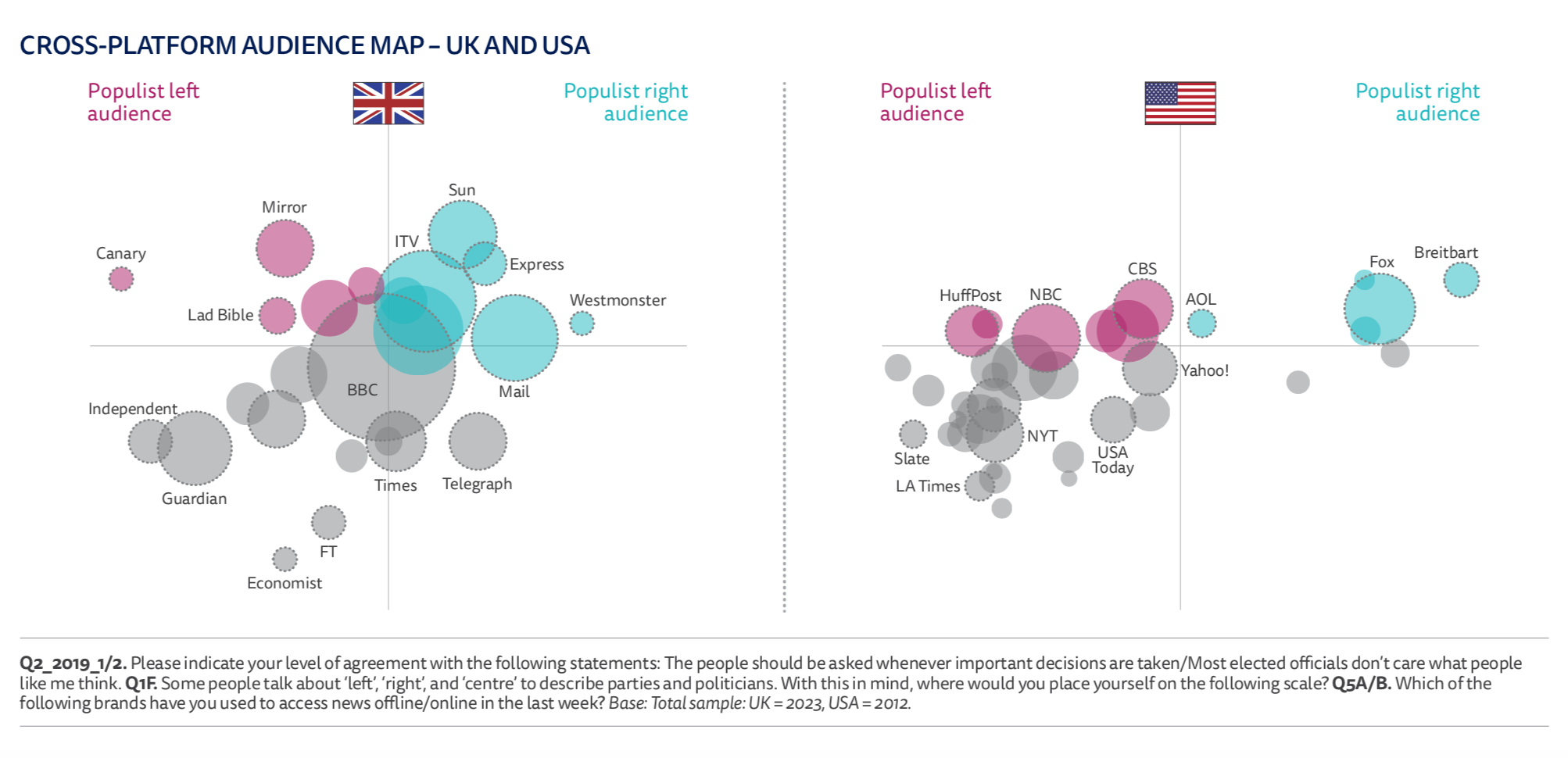
The growing stream of reporting on and data about fake news, misinformation, partisan content, and news literacy is hard to keep up with. This weekly roundup offers the highlights of what you might have missed.
— People are worried about fake news (no surprise) and claim they are switching to “more reputable” sources.
People worry about online fakery, and over 1/4 say they've started relying on more reputable sources as a result (plus another 1/4 saying they've stopped using dubious sources). While this will help some publishers, often low trust in news underlines it will not help everyone 5/7 pic.twitter.com/W9HKFL9fP7
— Rasmus Kleis Nielsen (@rasmus_kleis) June 12, 2019
(Note: “The interpretation of ‘reputable,’ ‘less accurate,’ ‘dubious,’ and other subjective terms were left to respondents to determine.”
This is affected by age and education level.


— Trust in the media is broadly down worldwide, but the situation in the United States is a little different: In the United States, Democrats’ trust in the U.S. news media has increased (amid Trump’s “fake news” accusations), while Republicans’ trust has decreased.


In the US the gap in trust in news between liberals and conservatives has been growing since 2015. If liberal America were a country it would have similar trust levels to the Netherlands. Conservative Americans have lower trust rates than Greeks or South Koreans #DNR19 pic.twitter.com/obTopO9bjJ
— Antonis Kalogeropoulos (@antoniskalog) June 12, 2019
— The report looked at populism and attitudes about news. U.S. readers of this column should keep in mind that, as the researchers note, the U.S. is far more polarized along left–right lines than it is along populist–non-populist lines (the same is true, to a lesser extent, in the U.K.); it’s generally believed that for populism In countries like Germany, Spain, and Sweden, however, populist attitudes tend to be more concentrated on one side of the political spectrum or the other. Anyway, the researchers attempted to measure respondents’ populism like this:
We identified those with populist attitudes based on their belief in: (i) the existence of a “bad” elite and the “virtuous” people — two separate groups with competing interests, and (ii) the ultimate sovereignty of the will of the people (Pew Center 2018). We tapped the first dimension by asking people whether they agree (on a five-point scale ranging from “strongly disagree” to “strongly agree”) that “most elected officials don’t care what people like me think,” and the second by asking whether “the people should be asked whenever important decisions are taken.” For the purposes of the analysis here, those that selected “tend to agree” or “strongly agree” for both of these statements were placed in the “populist attitudes” group, with all other respondents placed in the “nonpopulist attitudes” group.
They found that “populists prefer to use television news compared with non-populists and are less likely to prefer online news. These data will support those who argue that the role of social media has been overplayed when explaining the rise of Donald Trump compared with the part played by supportive television networks like Fox News.”

Online news, however, is also important: The researchers found that people with populist attitudes are more likely to use Facebook for news, and “as a group, those with populist attitudes say they have started spending more time on Facebook in the past 12 months, whereas everyone else says they are spending less.”
Populists are also more active on social media. They share and comment on news more often than non-populists – both, in Europe and the US (with the exception of commenting in the US). 3/7 #DNR19 pic.twitter.com/cdyve0aqr8
— Richard Fletcher (@dragz) June 13, 2019
Because in both the U.S. and the U.K. “the extent of left–right polarization is greater than the level of populist polarization,” in these countries it’s probably more useful to look at people’s political preferences to determine the news they read, rather than whether they identify as populists. Here, for instance, are the news outlets people read in the U.S. — on a populist scale and on a left/right scale:

Here’s the U.K.:

The researchers also created some interesting maps showing news outlets along two dimensions — populist left and populist right. In the U.S. and UK:

The researchers write:
In the U.S., though there are some outlets with populist audiences — such as Fox and HuffPost — it is clear that the majority of outlets have audiences that are predominately non-populist left, such as The New York Times. It is also clear that none of the outlets we examined in the U.S. have audiences that are as skewed toward populists as in the U.K.